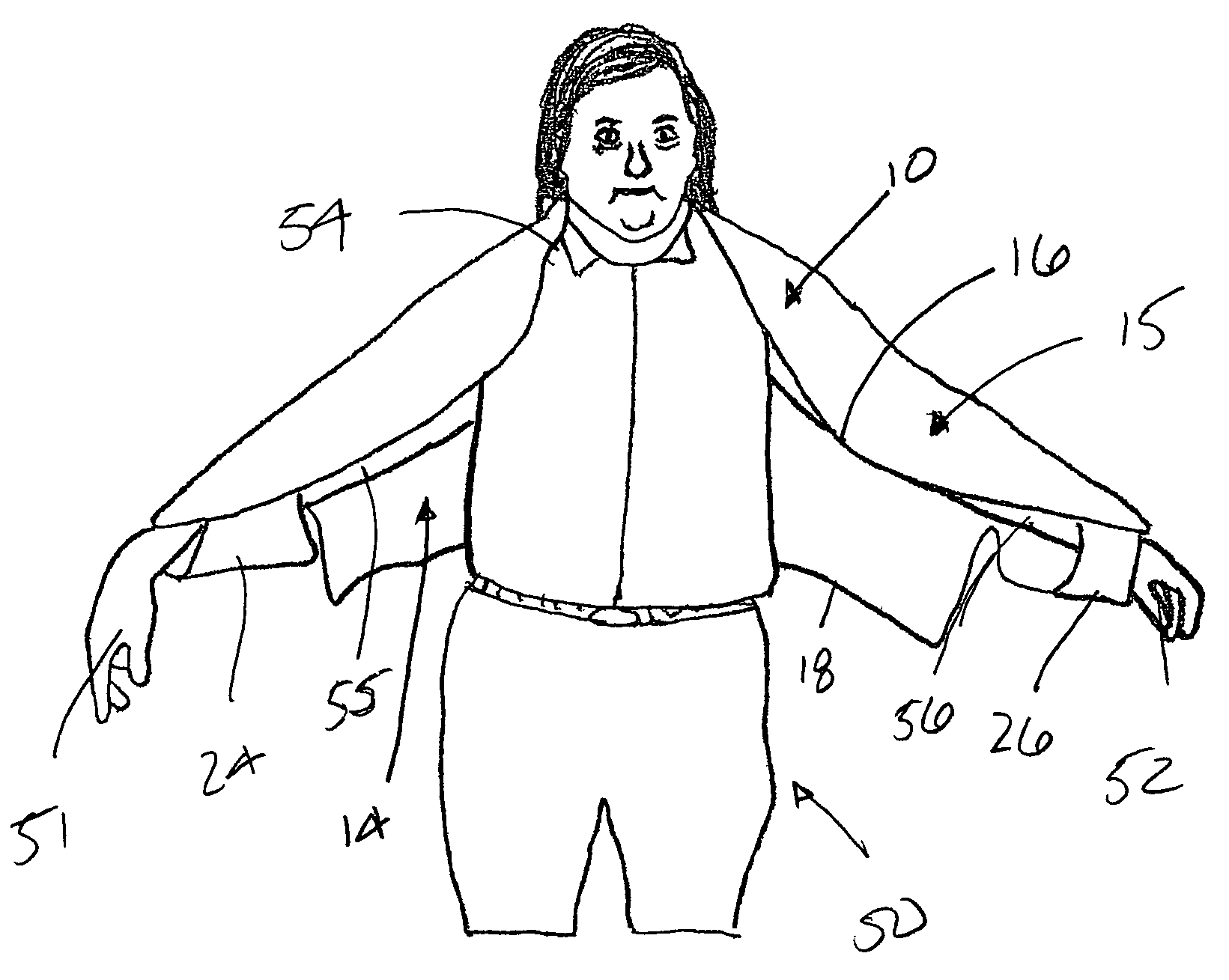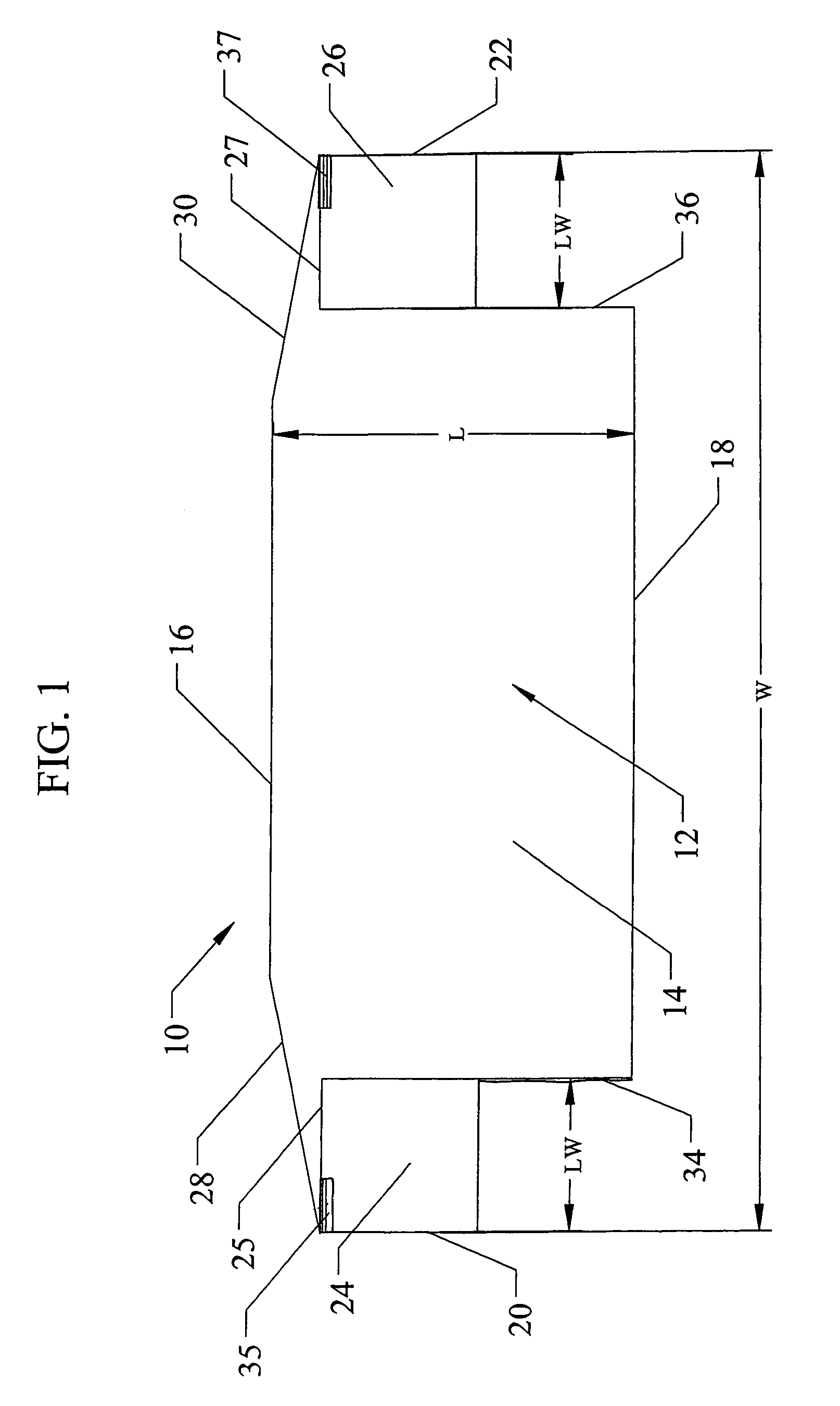Shawl
a technology of shawls and shawls, applied in the field of shawls, can solve the problems of poor blood circulation, elderly people's need for layers of clothing, and poor comfort, and achieve the effect of not compromising the dignity of users
- Summary
- Abstract
- Description
- Claims
- Application Information
AI Technical Summary
Benefits of technology
Problems solved by technology
Method used
Image
Examples
Embodiment Construction
[0029]Referring first to FIGS. 1 and 2, one basic embodiment of the shawl 10 of the present invention is shown. The shawl 10 includes a sheet 12 of fabric having an inner surface 14 and an outer surface 15 defined by a top edge 16, a bottom edge 18, a right side edge 20 and a left side edge 22. The sheet 12 is dimensioned to allow the right and left hands 51, 52 of the user to each extend beyond the right side edge 20 and left side edge 22 of the sheet 12 when the top edge 16 of the sheet 12 is draped over the user's shoulders 54. A right arm closure 24 extends from the inner surface 14 of the sheet 12 proximate to the right side edge 20, and a left arm closure 26 extends from the inner surface 14 of the sheet 12 proximate to the left side edge 22. Each of the arm closures 24, 26 has a width “LW” that is less than a width of a human forearm 56 and defines an opening 34 dimensioned to allow the user's hands 51, 52 to pass therethrough.
[0030]As shown in FIG. 2, the user 50 will drape ...
PUM
 Login to View More
Login to View More Abstract
Description
Claims
Application Information
 Login to View More
Login to View More - R&D
- Intellectual Property
- Life Sciences
- Materials
- Tech Scout
- Unparalleled Data Quality
- Higher Quality Content
- 60% Fewer Hallucinations
Browse by: Latest US Patents, China's latest patents, Technical Efficacy Thesaurus, Application Domain, Technology Topic, Popular Technical Reports.
© 2025 PatSnap. All rights reserved.Legal|Privacy policy|Modern Slavery Act Transparency Statement|Sitemap|About US| Contact US: help@patsnap.com



